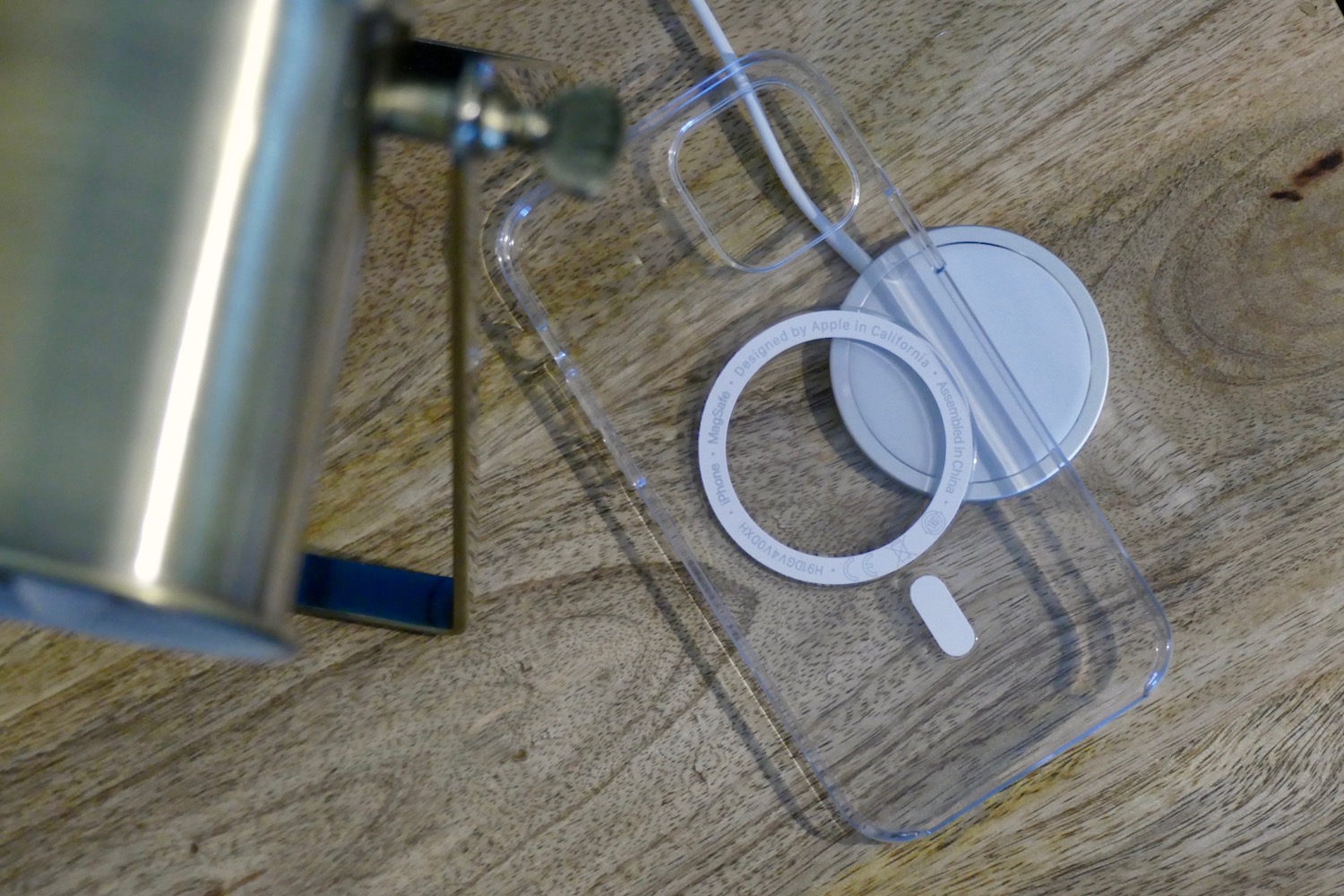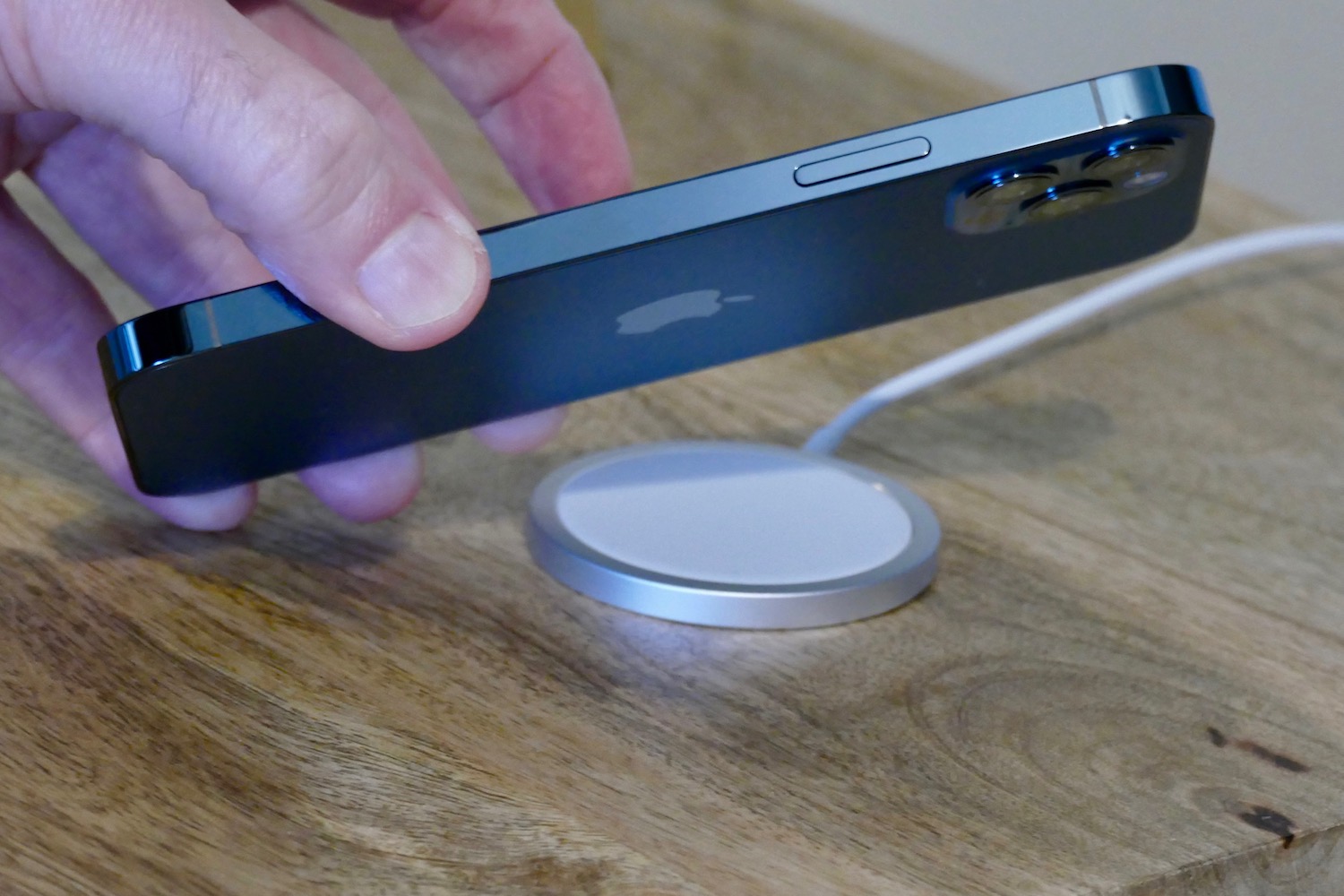Apple’s MagSafe Charger costs $39 and the clear iPhone 12 case with MagSafe costs $49. Using these two figures and some quick math, I’m in the position to tell you the total amount of money I wasted on MagSafe accessories is $88. MagSafe charging seems like a great idea, but it just doesn’t do enough yet to justify this price.
It’s not that MagSafe itself is a poor concept — it’s not. The puck charges my phone admirably, and the MagSafe case will undoubtedly protect my phone to a degree in the event of a drop. However, a few weeks into ownership, I’ve not found a compelling reason to use either, especially over any other similar product, which makes me wonder why I bothered at all.
What’s wrong with the MagSafe Charger?
Nothing is wrong with the MagSafe Charger. It’s a small, well-made wireless charging puck that charges my iPhone 12 Pro very efficiently, and will even (slowly) charge non-Apple phones too. When my iPhone is inside the MagSafe case, it snaps on to the puck with a solid thunk, and doesn’t come loose.

The MagSafe Charger does everything it says on the tin. But all the other wireless chargers in my home do basically the same thing — and none of them require a specially designed case. None of them are sitting at a precarious angle where the phone may slide off at any moment, so MagSafe magnets would be superfluous. And while the MagSafe Charger’s magnets are secure, they can actually be a bit annoying when you have to forcibly remove the phone rather than just pick it up, which is the case with all of my other wireless chargers. I like the green circle that appears on the phone’s screen when the MagSafe Charger attaches, but I’d be lying if I said I’d miss it.
When I place my iPhone 12 Pro on my old 10W Ted Baker wireless charger, I have to be a little careful with the positioning to ensure it starts charging, but otherwise it’s pretty much the same deal. And this also applies to my 10W Choetech wireless charger, which costs about $13. I don’t expect a wireless charger to change my life, but I do have a problem with a new charging “feature” that doesn’t provide any benefit.

How about the case? I’ve already said I don’t like the smooth texture of the plastic, or the additional size it adds to the iPhone 12 Pro. And seeing as the MagSafe Charger’s magnets still work with a slimline case — I’ve recently been using the $26 Caudabe Lucid Clear case, and it’s fine — splurging on Apple’s case just out of a sense of obligation seems pointless.
Think about the way you charge
But the speed, right? That’s what makes the difference? Well, that depends how you charge your phone, and also how much more money you’ve spent. You don’t get a charging block with the MagSafe Charger, and Apple recommends its 20W USB-C Power Adapter to get the best from it, which adds another $20 to the price. Comparable third-party options aren’t much cheaper. If you use a random power brick and its output is low, the charging speed will be much slower.
Don’t think you’ll get away with not buying a charging block at all, as you may not. The cable on the MagSafe Charger ends in a USB-C connector, which doesn’t fit into old iPhone charging blocks you may have hanging around, and USB-C chargers are still relatively uncommon to find packaged with other devices. Factor that cost into your MagSafe endeavors, and it makes even less sense. The tangible benefits don’t warrant $39, let alone $59 when buying at least one new charging brick to make the whole thing work in the first place.

Staying with the cable for a moment, it’s a bit short (just over 3 feet), and because it’s fixed to the puck, there’s no easy way to extend it. This is fine if the charger just sits on a table and it’s near an outlet, but less so if said outlet isn’t conveniently placed. It also undermines one of the best uses for MagSafe, and that’s charging while using the phone to watch video or play games, as you don’t have a cable sticking out the side of the phone. With this short cable, you will probably have to sit hunched over an outlet to enjoy this feature.
Finally, if you charge your phone overnight, the MagSafe Charger — and arguably all wireless chargers — provides no benefit over a wired charger. Apple’s wireless charging speeds are slower than its wired connection too, so wired is always the way to go if time is of the essence. I don’t want this to turn into an anti-wireless charging diatribe, because the technology is helpful and convenient, just don’t expect MagSafe to be much different from the other options out there.
Is MagSafe already dead?
Right now, I can’t give you a good reason to spend $39 on the MagSafe Charger, or $49 on Apple’s clear MagSafe case. Wireless chargers can be purchased for less, and perform a very similar job. Belkin’s 15W Boost Charge pad is $40, and comes with a 24W charging brick, for example. You just have to do without the magnets, which unless you live in a little crooked house with a little crooked cat, won’t affect you greatly. And as I’ve pointed out, it may even be a benefit.

What I am hopeful for is the future of MagSafe. Apple’s accessories are always quite expensive, and at the moment, they’re basic examples of what’s possible. Third-party accessory makers are working on MagSafe accessories, and we should see some interesting new products from them in the near future. In particular, I’m waiting for an in-car mounting system using MagSafe — Belkin has one coming — provided the magnetic power has the strength to keep it in place.
MagSafe is a new Apple feature to watch. There’s lots of potential that hasn’t been explored yet, and while there’s no question the magnetic system works really well, you’ll wonder why it’s there at all if you buy the current range of MagSafe accessories available from Apple.



